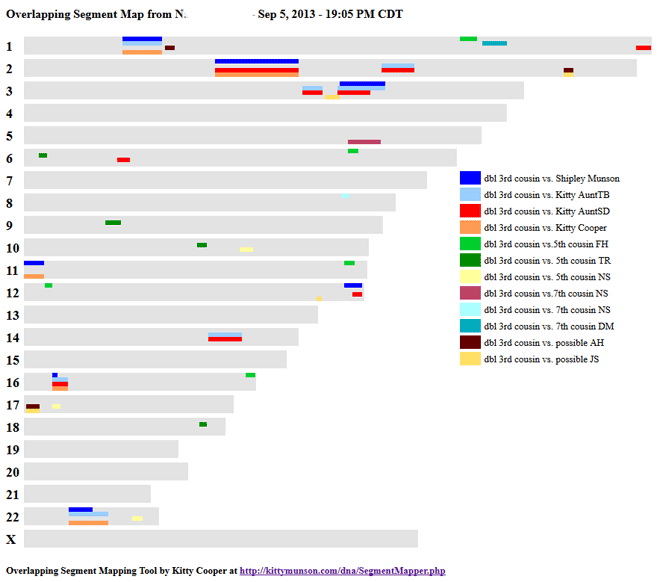So many people were trying to use my DNA chromosome mapper tool to look at a picture of their DNA relatives’ matching segments that I realized that another tool was needed to meet that demand. The first version of the new DNA segment mapping tool is ready. More information is at http://blog.kittycooper.com/tools/segment-mapper/
The DNA Segment mapper can show the matching DNA from up to 40 people in a chromosome style chart. Here is what my Dad’s top 40 matches look like (names are removed). The first two are first and third cousins once removed.
There is a page under tools above with more complete description and documentation.


